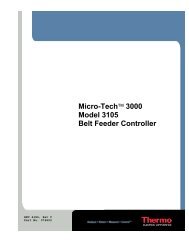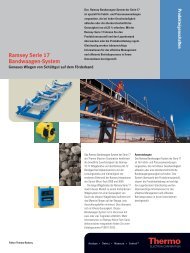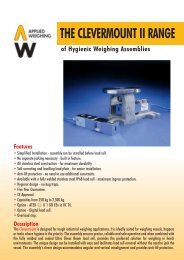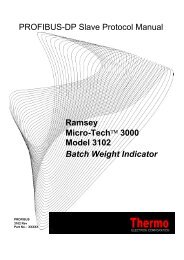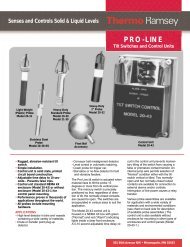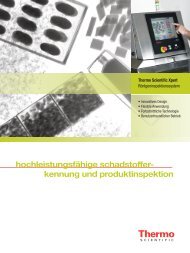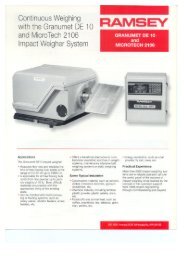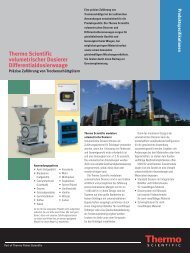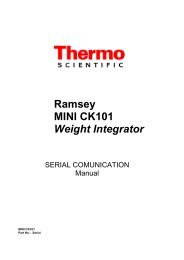Ramsey MINI CK101 Weight Integrator - Hoferick Engineering GmbH
Ramsey MINI CK101 Weight Integrator - Hoferick Engineering GmbH
Ramsey MINI CK101 Weight Integrator - Hoferick Engineering GmbH
Create successful ePaper yourself
Turn your PDF publications into a flip-book with our unique Google optimized e-Paper software.
1. PROFIBUS OVERVIEW<br />
1.1 Introduction to the PROFIBUS<br />
The PROFIBUS born by the need to have an open, vendor independent communication system that allows<br />
to connect all the components used for the automation of technical processes.<br />
The PROFIBUS is a standardized communication system, all its characteristics, rules and technical<br />
information are collected in the PROFIBUS DIN 19245 normative.<br />
There are three main variation of PROFIBUS corresponding to the intended application: PROFIBUS-FMS ,<br />
PROFIBUS-DP and PROFIBUS-PA.<br />
1.2 The PROFIBUS-DP<br />
This is the performance optimized version of PROFIBUS, specially dedicated to time-critical<br />
communication between automation system and distributed peripherals.<br />
It is typically used to transfer I/O images between a main PLC and remote devices (normally sensors,<br />
actuators, transmitters). In this case it will be used to transfer (read and write) blocks of data also.<br />
PROFIBUS is a typical master/slave communication where the main PLC is the master and the remote<br />
devices are the slaves. It offers also the possibility to implement complex multi-master structures but this is<br />
not relevant for our purpose. The line is a 2 wires twinax cable, connection is EIA RS 485. Baud rate can<br />
be from 9,6 kbit/s up to 1,5 Mbit/s, length of the line is max 200 m at 1,5 Mbit/s extendible with repeaters.<br />
1.3 Data Transfer<br />
The interface between the Master and the Slave are structured in parameterization - configuration - and<br />
data transfer phase. In the parametrization and configuration phases each Slave compares its real<br />
configuration with the configuration data received from the Master. When verifying the configuration<br />
(device type, format and the length of information ...) has to be identical. This guarantees a protection<br />
against configuration fault. Only if these tests are successful the Slave can enter in the data exchange<br />
phase. Max number of data that it is possible to transfer at once in this phase is limited to 246 bytes (123<br />
words).<br />
1.4 Protection mechanisms<br />
Besides the configuration check to avoid erroneous configurations, the Slave uses the Watch Dog control<br />
to detect failures on the bus. If a Slave recognizes no successful data transfer with the Master within the<br />
Watch Dog control interval, it generates an alarm condition.<br />
5 - 56




